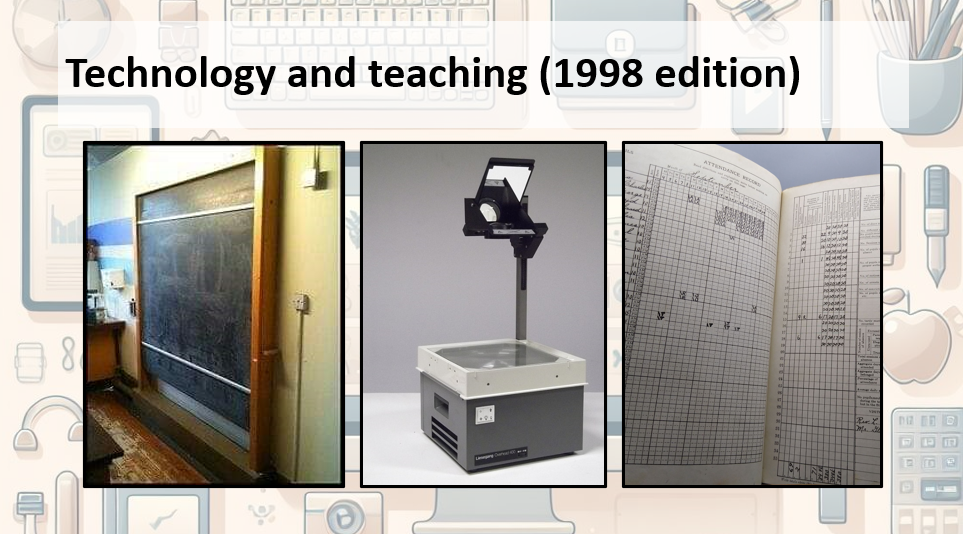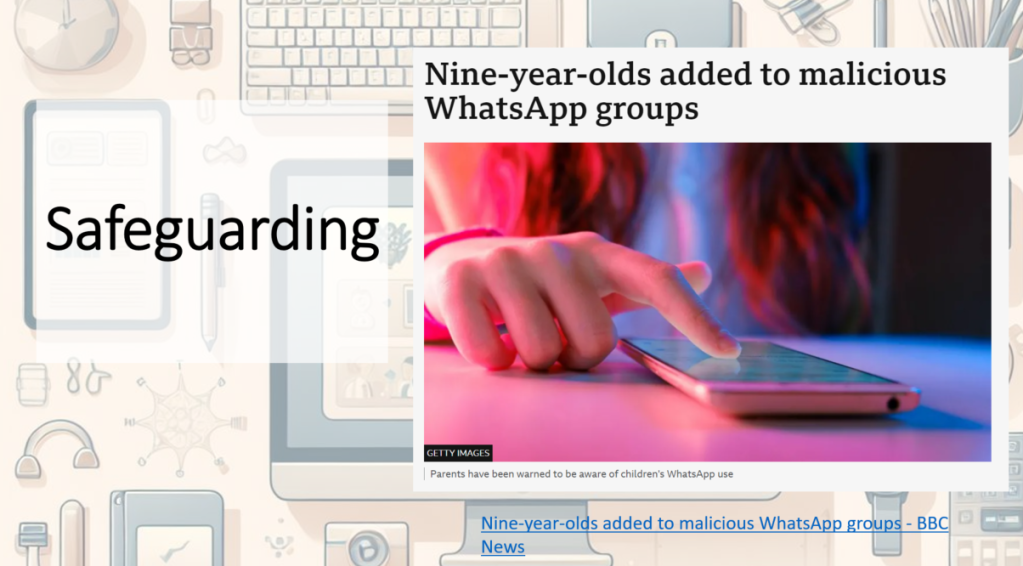I recently spoke at the EdExec live event, talking about school IT strategy. I thought I would share some of my somewhat rambling thoughts from the event. I note one of my opening slides related to Star Trek and what appears to be an ipad-esqe device in captain Piccard’s hands, back in a 1992 episode of The Next Generation. Now Star Trek TNG is set in the 24th century, yet the iPad made its appearance in 2010, in the 21st century. This shows how poor we are at predicting the future, however also hints to the pace of technological change.
Tech is here and here to stay

We just need to look at our lives today and we can see that technology is a key part of it. On my way to London for the EdExec event I used digital train tickets, I listened to music via spotify, worked on some blogs using my MS Surface while also engaging in social media discussion. I also used Google Maps to help me navigate my way to the event venue. Technology is now an essential part of our everyday lives. And looking at schools it is no different. When I qualified as a teacher, back in the late 90s (and that does make me feel old!) you put your lesson content on a roller blackboard or acetates for display via an OHP. You recorded student attendance manually in a register. Now, all of these things involve technology, recording attendance on your schools Management Information System (MIS), putting digital content on your digital panel, smartboard or projector. You also use digital tools for safeguarding, for communication and for much more. All of our schools are digital, to some extent, already.
Strategy
And if schools are digital there should be some sort of plan to manage the training needs of staff, sustainability into the future, renewal and updates, etc. Although the technology is already here, we need to ensure we have a plan to make this situation sustainable into the future. Beyond the basics, if you are looking to significant innovation, such as rolling out a learning platform or 1:1 devices for the first time, we need a detailed strategy and plan to ensure we get all the basics in place, such as infrastructure, training and support. After this, once technology is largely embedded and mature, such as at Millfield where 1:1 devices have been in place 2012, office 365 has been phased in since 2019, and Teams/OneNote from 2022, there isnt the same need for a distinct technology plan and technology now takes its lead from the broader school vision and strategy. So the need for a distinct technology strategy varies with the technology maturity in the school. I also note as you go down the iPad route, over chromebooks or windows laptops, or Office 365 rather than Google Workspace for Education, etc, and as these become embedded, it becomes increasingly difficult to change path.
A key issue in all the technology decision making is that it is not about the technology, the shiny new Chromebooks or Google Classroom, but about the Why and what you hope to achieve. Is it about improving access for students with SEND, or about students with EAL? Is it about supporting the development of soft skills such as creativity, communication, collaboration and problem solving? Why are you seeking to use technology and what do you how to achieve? Once you have this you can then look at which technology or technologies are the best fit for your requirements.
Balance
I also highlighted the importance of balance during my session. Everything we do, which we do for good reasons, will have a negative implication. We ban phones and students will still use them, plus we lose an opportunity to teach students about appropriate use of their devices. We buy 1:1 devices and we increase the safeguarding risks as students now have their own personal devices, while also possibly having a wellbeing impact due to increasing screentime. There is a constant balance and very few, if any, binary situations where something is purely good or bad; The reality is that technology tends to be good and bad. The key therefore is the need to consider the options and the good vs. bad continuum and then to work out what works for your school and where on the continuum you will sit, your risk appetite.
Some of the future
I also spent a little time looking towards the future, but acknowledging that we are poor at predicting the future, so I had opted for some future advancements, which are almost here, or here but not fully implemented at this time. Now this clearly had to include mention of Generative AI (GenAI) and how education and schools need to look to adapt to this new technology, which both students and staff are already using. If GenAI gives all students the ability to create coursework, homework and other content, but with a broader vocabulary, independent of their primary language, independent of any special educational needs or disabilities and of their creative thinking, isn’t this a good thing? But if this is the case, how do we continue to grade student work and award them their GCSEs and A-Levels, or maybe we no longer need to rank and order students in the same way we used to? There is the potential for such a broad shift in education resulting from GenAI, but I also am concerned that there is also potential to expand the digital divides which already exist.
Linked to the above is hopefully that shift towards digital exams rather than sitting students in an exam hall once year with paper and pen. And I am not talking about the “paper under glass” exams which are planned for the coming years, where the paper exam is just made into an identical digital exam. I am thinking more about adaptive testing, allowing students to take exams as and when they are ready, allowing schools to manage 100’s of students through a Maths exam for example, but where they don’t have that number of devices and therefore have to put students through in batches. It may even be that students don’t even sit these exams in the school but can actually engage in them anywhere and anytime.

And in the way of balance, with GenAI, and with a shift towards digital exams, and with more digital time generally, we need to consider the risks related to addictive social media content, data protection of increasing volumes of data being shared, particularly where the data relates to young people, the risks associated with fake news, and with influence and manipulation of people via social media and other platforms.
A solution?
I finished my session with my favourite quote, which I have been using for years, the quote from David Weinberger, “the smartest person in the room, is the room”. In a world where technology is moving so fast, and where education has a tendency to move much slower, our best change to maximise the positive impact of technology, while minimising and controlling the negatives, is to focus on the power of the collective. Working collectively, sharing ideas, what works, but also what doesn’t, will allow us all to be better than any of us can be individually. Our biggest strength is in networks, in collaborating and in sharing. The bigger the room, the smarter we all are.




